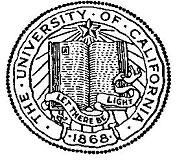
|
IN MEMORIAM
IN MEMORIAM
Harold B. Gerard
Professor of Psychology, Emeritus
Los Angeles
1923–2003
Harold Gerard, 79, professor of psychology for over 40 years, succumbed on January 16, 2003 to a long-term illness following kidney failure. Professor Gerard was a frequent contributor to the literature of experimental social psychology, particularly for his theory and research on group influences on attitudes and behavior and cognitive dissonance theory. In later years, he was a practicing psychoanalyst and was developing research relating psychoanalytic theory to social phenomena. Among many distinctions, Gerard was awarded a Guggenheim Fellowship, a Fulbright Fellowship at the University of Nijmegen, Netherlands, and was twice a fellow at the Center for Advanced Study in the Behavioral Sciences.
Harold, born in Brooklyn in 1923, began his studies as a physics major at Brooklyn College. With the beginning of World War II, he enlisted in the signal corps, serving in the invasion of Europe. The horrors of Hiroshima and Nagasaki left him disenchanted with physical sciences and on completing his B.A. at Brooklyn College in 1947 he enrolled in the graduate program in sociology at Columbia. It was then that Harold also met and married Dorothy, his wife and close companion for many years. He so impressed one of his professors, famed anthropologist Margaret Mead, that she offered him a fellowship to carry out field work with her in New Guinea. Gerard, fascinated by an experiment by Kurt Lewin and Ronald Lippitt on democratic, autocratic, and laissez-faire leadership, instead chose to study at the University of Michigan and at the Research Center for Group Dynamics. He was drawn to the creative experimental work on group pressures toward uniformity in the program headed by Leon Festinger, under whose direction he received his doctorate in 1952. Thereafter, he held professorial and research appointments at the Research Center for Human Relations of New York University, at the University of Buffalo, as a Fulbright scholar in the Netherlands, the Social Science Communications Center of Bell Telephone Laboratories, and the University of California, Riverside. He established a reputation for theory and creative methods for systematically varying the characteristics of groups, such as degree of group cohesiveness and homogeneity, and examining deviation, rejection, and opinion and behavior change.
Foundations of Social Psychology (1967), which Gerard co-authored with Edward E. Jones, was intended as an introductory text book, but proved too difficult for undergraduates; widely assigned in graduate seminars, however, it continues to this day as a major resource for theory and research in social psychology. For example, to give greater understanding for phenomena examined in dissonance and consistency theories, the authors developed the concept of “unequivocal behavioral orientation” (UBO) as an underlying motivational basis.
At the University of California, Riverside, Gerard collaborated with Professor Norman Miller and others there, in a huge field experiment made possible by a court-ordered desegregation of a school system which had been very segregated. Though there were important findings, as reported in their book, School Desegregation: A Long-Term Study (1975), Gerard and Miller were particularly disappointed to find that the expected and greatly anticipated dramatic improvements in minority student performance did not appear. An important factor, it turns out, was the effect of teachers’ expectations for their students.
Gerard joined the faculty of the Department of Psychology at UCLA in 1962. He continued to teach and conduct research in social psychology until his retirement in 1992. In the meantime, in 1969, Harold married Desy Safán, a psychoanalytic clinical psychologist. Gerard, disappointed by the Riverside experience, was also disenchanted by the rapid increase in experimental social psychological research, whose meaningfulness, he felt, did not match its sophistication in research design. At the age of 59, with Desy’s encouragement, Gerard entered psychoanalytic training, and became a psychoanalyst, maintaining for years a limited private practice. In psychoanalysis, Gerard felt renewed excitement and challenge, and he carried out a series of studies on unconscious psychodynamics and emotions and compared Freudian and Kleinian theories of development. These were enhanced by his methodological skills and by his previous work on cognitive dissonance and a need for unequivocal behavioral orientation. He now believed that cooperation and competition, close relationships, altruism and aggression, prejudice, and so on, could all be illuminated through understanding unconscious and psychodynamic factors. Regrettably, his illness prevented a full exploration of this line of research.
Gerard is survived by his wife Desy Safán-Gerard, by his five children, Anthony, Sarah and Annie Gerard, and Denise and Mauricio Mankewitz, by his eight grandchildren, and his one-month-old great-grandchild, Samantha Gerard.
Bertram H. Raven